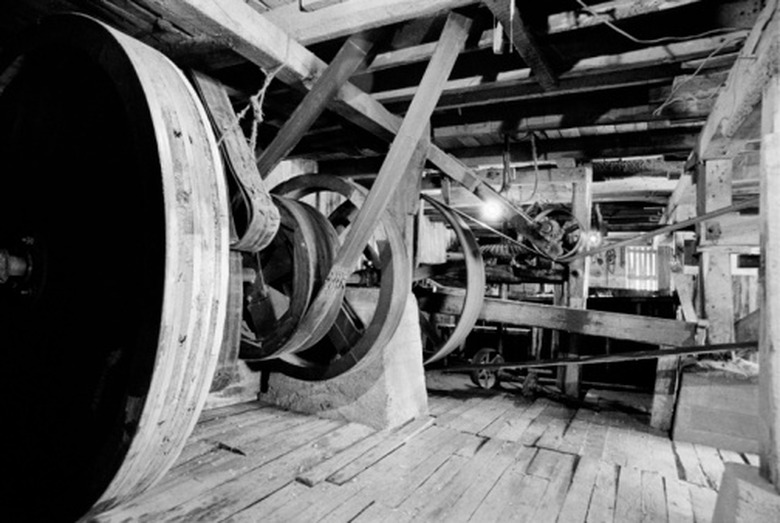How To Convert CMH To BTU
The cubic meters per hour (CMH) of a heat exchanger describes the flow rate of its refrigerant through the system. The exchanger's British Thermal Units (BTUs) describe the amount of energy that it transfers. It moves this energy by pumping the fluid, so these two values are directly proportional. The other factors affecting the amount of heat that the unit moves are the fluid's temperature drop while moving through the exchanger and the length of time during which the exchanger runs.
Step 1
Multiply the flow rate, measured in cubic meters per hour, by 4.4 to convert it to gallons per minute. For example, if 100 m^3 of fluid go through the exchanger each hour: 100 × 4.4 = 440.
Step 2
Multiply this flow rate by the refrigerant's temperature rise. For example, if fluid enters the exchanger at 59 degrees Fahrenheit and rises to 72 degrees Fahrenheit: 440 × (72 – 59) = 5,720.
Step 3
Multiply this result by 500, a conversion factor that takes the fluid's heat absorption rate into account: 5,720 × 500 = 2,860,000. This is the unit's energy transfer rate, measured in BTUs per hour.
Step 4
Multiply this rate by the number of hours for which the appliance runs. For example, if you are calculating the heat transferred over the course of half an hour: 2,860,000 × 0.5 = 1,430,000. This is the number of BTUs that the heat exchanger moves.
Cite This Article
MLA
Menezes, Ryan. "How To Convert CMH To BTU" sciencing.com, https://www.sciencing.com/how-8687377-convert-cmh-btu/. 7 August 2017.
APA
Menezes, Ryan. (2017, August 7). How To Convert CMH To BTU. sciencing.com. Retrieved from https://www.sciencing.com/how-8687377-convert-cmh-btu/
Chicago
Menezes, Ryan. How To Convert CMH To BTU last modified March 24, 2022. https://www.sciencing.com/how-8687377-convert-cmh-btu/
